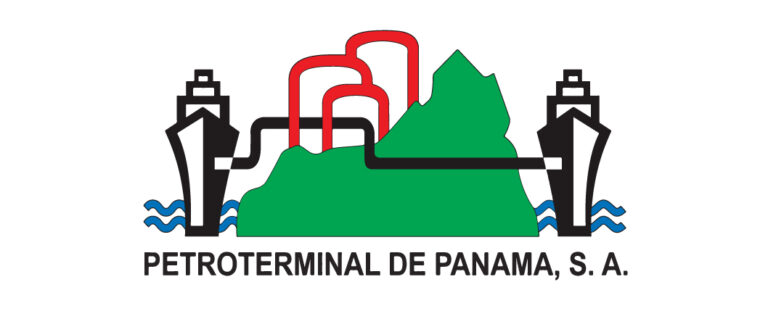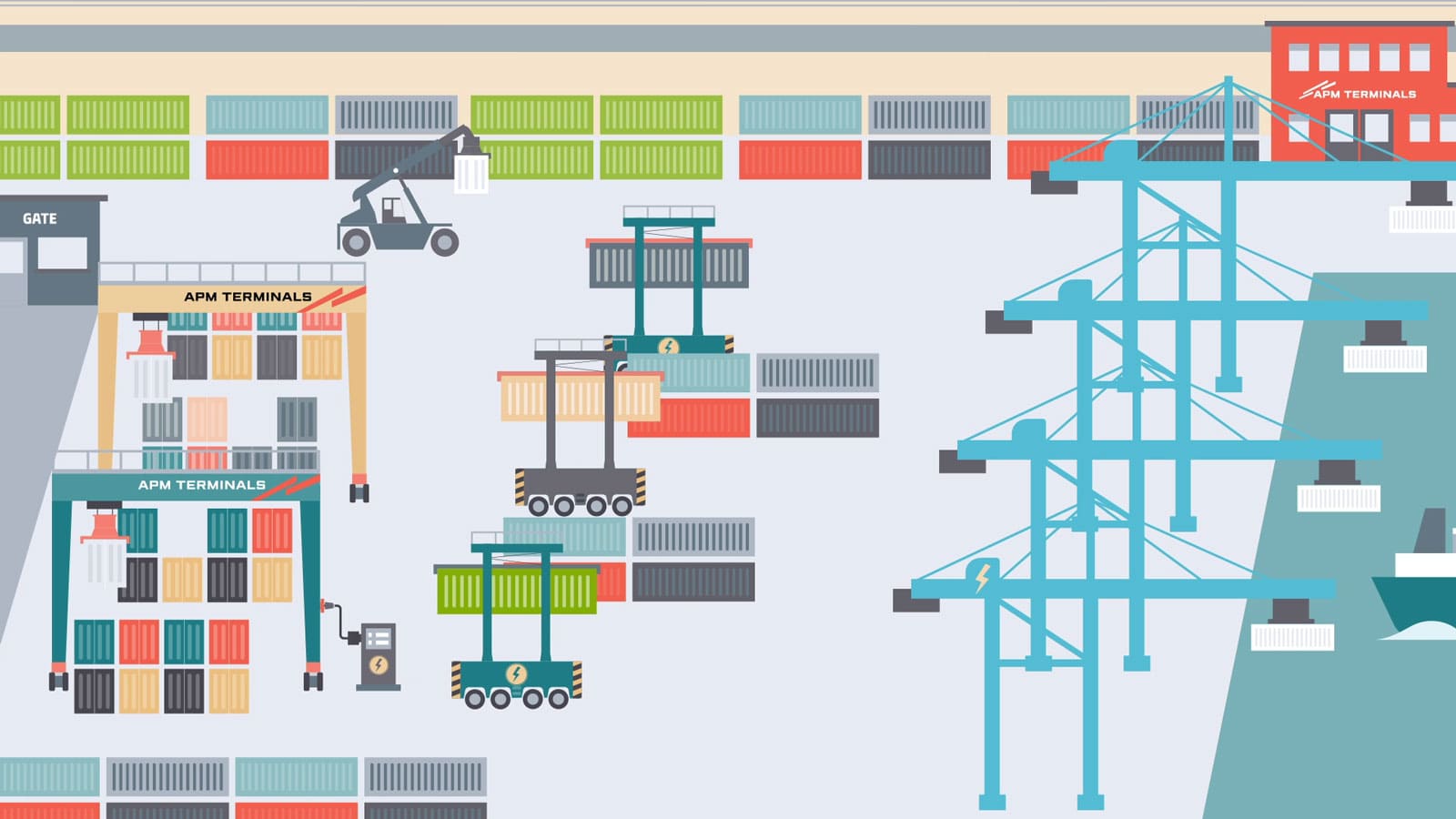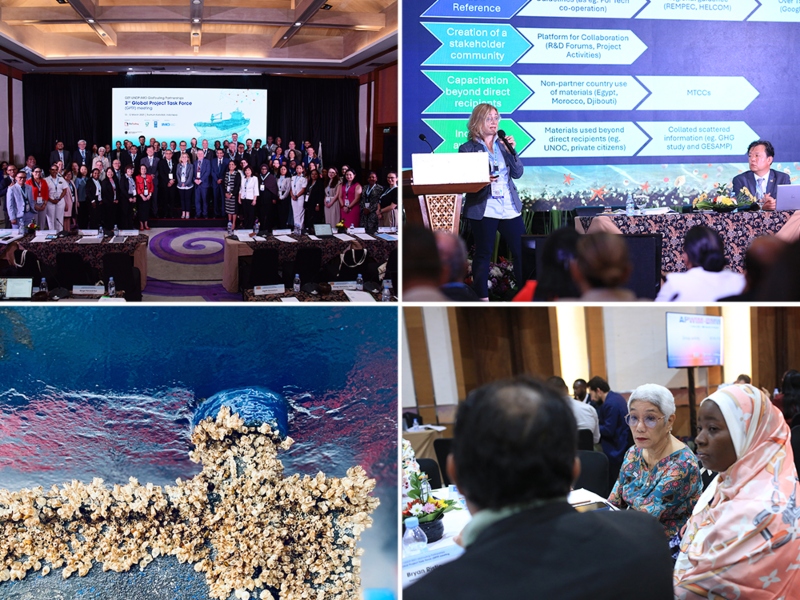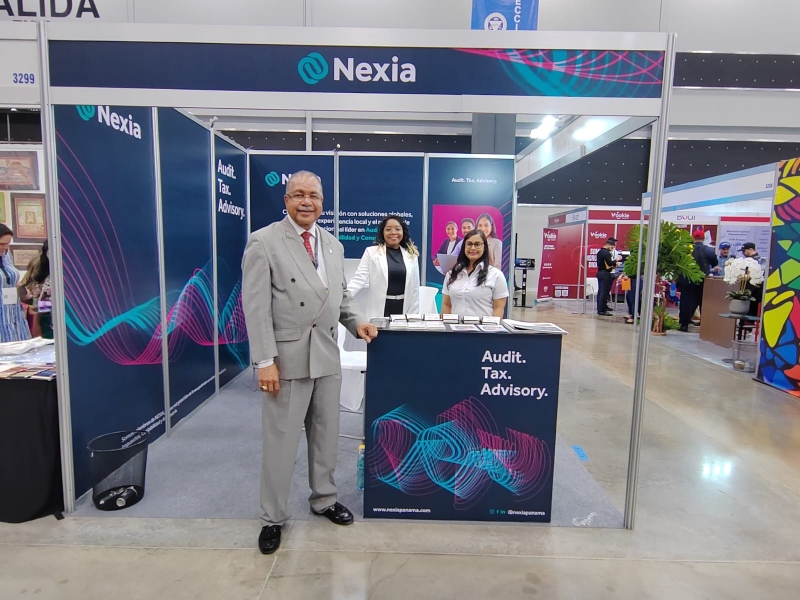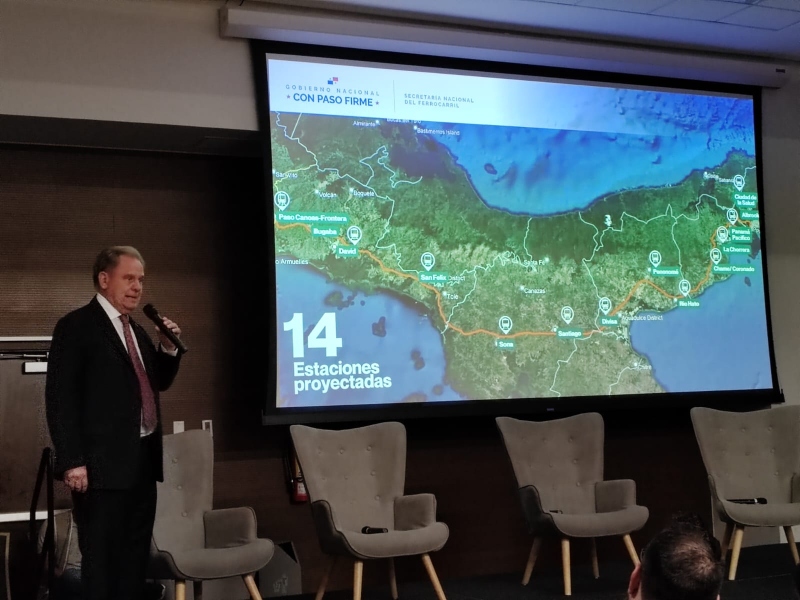Electric cars are becoming common place on our roads, as fierce competition and economies of scale drive down prices, improve technologies and increase demand. This revolution has yet to happen for high-ticket, low volume port equipment. But that is now set to change. APM Terminals’ USD60 million investment in port-equipment electrification pilots, in collaboration with leading suppliers, is set to make the step-change needed to move the industry forward.
Source: APM Terminals
The global terminal company has committed to full carbon neutrality by 2040, a bold ambition it will achieve by optimising energy consumption, switching to green electricity, on-site renewables, and electrifying assets. Part of this transformation includes the switch from primarily diesel-driven equipment to zero-emission electric versions.
Over the next decade, APM Terminals estimates it will need to buy or retrofit over 2,650 pieces of electric heavy port equipment.
A key challenge facing the company, is the availability of competitively priced heavy-duty equipment such as reach stackers, terminal tractors, empty container handling equipment and straddle carriers. Research and development in this area has been slow off the mark and for ports around the world looking to make eye-watering investments in new electric equipment, numerous questions remain unanswered.
Its US$60 million electrification pilot programme is already underway in Aqaba Container Terminal, APM Terminals Barcelona, APM Terminals Mobile, Pier 400 Los Angeles and Suez Canal Container Terminal.
Long-term collaboration with suppliers
To support these pilots, APM Terminals recently signed groundbreaking agreements with Konecranes and SANY for a long-term collaboration on the further development of electric port equipment.
The company has ordered ten electric terminal tractors, two electric reach stackers and two electric empty container handlers from SANY. APM Terminals also became the first company globally to place an order for four battery-powered Konecranes Noell straddle carriers, to be delivered in Q3 2024. Both orders also include charging infrastructure.
Completion of the pilots is expected early 2025 and knowledge and insights gained from the pilots are likely to drive up supply, encourage the development of industry-wide best practices, and stimulate ongoing development long term.
Government support
The five terminals were chosen for their decarb-ready maturity levels, supportive local authorities, government and legislation. In these locations, next-level electrified equipment will be tested, and staff will be offered training in future-ready safety and maintenance protocols.
elle Burger, Program Lead Electrification Pilots at APM Terminals said the multi-million pilot and investment package was intended to ‘create a spark’ that will ignite the manufacturing sector, creating jobs and business opportunities.
In the next decade, APM Terminals estimates it will need to buy or retrofit over 1,500 electric Terminal Tractors (eTTs), 500 electric Reach Stackers (eRS), as well as electric Empty Handlers (eEH), electric Top Loaders (eTL), 100 electric Straddle (eSC) and Shuttle (eShC) Carriers and 550 Rubber Tyred Gantry cranes (RTGs).
Planting the seeds
“This is not an investment on which we will expect see an immediate or short-term return,” he said. “We are making this investment as a solid benefit for our customers in the long term. It can be seen as ‘seed money’ to stimulate growth in carbon-neutral tools for the benefit of the entire sector and the earth itself.”
APM Terminals has identified suppliers, including major names in the business, but also new entrants. “We see young, emerging companies ready to step up and deliver. They have the passion – and the prototypes. We are providing the resources to encourage growth, standardisation, and scale which will lead to accessible pricing,” said Burger.
Adding to existing fleet
In 2022, APM Terminals purchased over 180 pieces of electric or hybrid container handling equipment. Together with a switch to renewable electricity across its operations, direct electrification and green fuels APM Terminals will achieve its net zero objective by 2040. Read more about APM Terminals’ decarbonisation strategy here.
![]()









